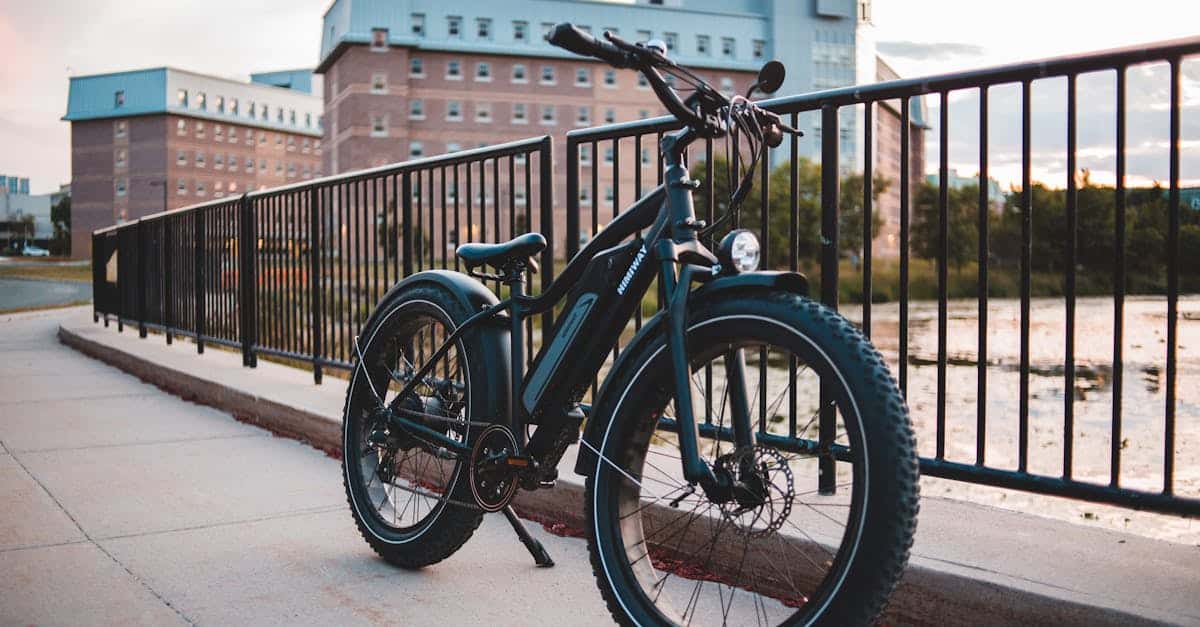When considering using a electric bike, the question of bad weather, in particular the rain, arises often. Indeed, these two-wheelers are designed to withstand varied climatic conditions, but it is essential to take certain precautions. E-bikes typically feature waterproof components, but that doesn’t mean they’re invincible to wet conditions. It is wise to use mudguards to avoid splashing and to ensure good interview of the battery and electrical circuits to ensure their longevity and proper functioning. Furthermore, the visibility is primordial; equip your bike with lights and reflective clothing can be crucial in rainy environments. In short, an electric bike can absolutely be used in the rain, provided you follow these recommendations.

The question of using a electric bike in the rain raises several aspects, ranging from safety to equipment durability. Many cyclists wonder if their electric bike is durable enough to handle bad weather. In this article, we will explore the characteristics of electric bikes, the precautions to take in case of rain and the recommendations to enjoy your journeys peacefully, even in the deluge.
The design of electric bikes
THE electric bikes are often designed to withstand varying weather conditions. Generally, their components, including the motor and battery, are protected against moisture. However, their water resistance varies from one model to another. Some bikes have a protection rating, indicating their ability to resist water. It is therefore advisable to find out about these specifications before going out in the rain.
Precautions to take in the rain
Using an electric bike in the rain involves certain precautions. First of all, it is crucial to wear appropriate clothing to stay dry and avoid discomfort. Next, tires play a vital role in wet grip. Opt for tires with high traction and make sure they are in good condition. In addition, visibility is a key factor: it is recommended to have functional lights to be seen, especially when rain is accompanied by low light.
Safety first
Driving in the rain can increase the risk of slipping or losing control. It is therefore essential to reduce your speed and anticipate braking more. THE disc brakes, commonly found on modern e-bikes, offer better performance in wet conditions compared to rim brakes, thus ensuring increased security.
Conservation and maintenance of the electric bike
After an outing in the rain, it is important to ensure good interview of your electric bike. Carefully dry sensitive parts, especially the battery, to avoid any oxidation. Regular cleaning will help prevent the build-up of dirt and moisture, extending the life of your equipment. For practical tips on battery care, here’s a helpful guide here.
The impact of rain on autonomy
It is also important to understand that weather conditions, such as rain, can influence theautonomy of your electric bike. The increased resistance caused by water and the need for higher power to overcome friction can actually reduce the distance you will be able to travel. It is therefore recommended to plan shorter trips or check your battery charge before leaving.
The benefits of a wet road
Despite the challenges that rain poses, there are benefits to using an e-bike in these conditions. THE rainy roads are often less busy, offering a calmer driving experience and, sometimes, a unique ambiance with the reflections of lights on the wet ground. In addition, choosing to opt for an electric bike in bad weather helps reduce your ecological footprint, a significant aspect at a time when sustainable development is at the heart of concerns.
Ultimately, it is entirely possible to use a electric bike in the rain, provided you take the right precautions. Find out enough about the specifics of your model and do not hesitate to consult the different types of existing electric bikes to choose the one that best suits your needs. For more information on this topic, see the links on practical and ecological advantages and the adapted solutions to varied driving conditions.
- Water resistance: Electric bikes are designed with water-resistant components.
- Visibility: In case of rain, it is important to wear reflective clothing.
- Adhesion: Wet roads can reduce tire grip.
- Precautions: Avoid sudden braking to prevent slipping.
- Interview: Be sure to dry the components after riding in the rain.
- Using Mudguards: Mudguards help protect the bike and rider.
- Battery: Avoid exposing the battery to water for long periods of time.
- Lights: Use functional lights for added safety.
Frequently Asked Questions About Riding an E-Bike in the Rain
Can you ride an e-bike in the rain? Yes, e-bikes are generally designed to withstand a variety of weather conditions, including rain. However, it is recommended that you take special precautions.
Are e-bikes waterproof? Most e-bikes have some water resistance, but this does not mean that they are completely waterproof. It is important to check the specifications of the model you own.
How do I protect my e-bike battery in the rain? It is recommended to cover the battery with a waterproof bag or remove it if possible when you know that heavy rain is expected.
Should I change the way I ride in the rain? Absolutely. The surface can be slippery, so it is advisable to reduce speed and stay alert for obstacles.
Do the brakes work as well in the rain? Generally, disc brakes work effectively in the rain, but it is always wise to test the effectiveness of your brakes before setting off.
What are the dangers of using an e-bike in the rain? In addition to the risk of slipping, visibility can be reduced, so it is essential to use lights and reflective equipment.
Do I need to service my e-bike more often if it is used in the rain? Yes, moisture can accelerate component wear, so regular maintenance, including cleaning and lubrication, is recommended.